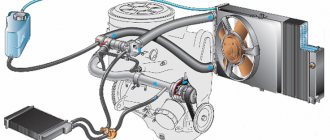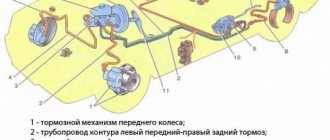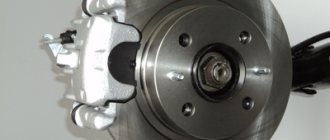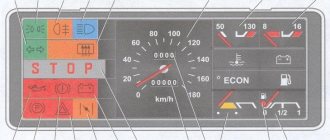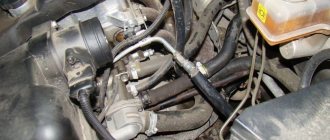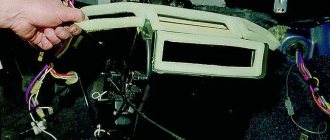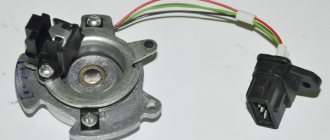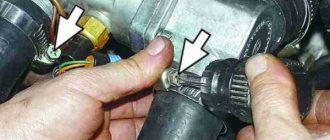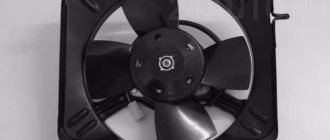An article about existing modifications of VAZ radiator pipes and hoses used on Lada cars...
Greetings, readers to the blog RtiIvaz.ru. The article examines all existing VAZ radiator pipes, heater hoses, and filling cooling systems used in Lada cars ever produced by the plant.
In any modern car that has a liquid cooling system, all kinds of pipes are used to connect the elements of the system. When operating a car, special attention should be paid to them, since if not noticed in time, a defect that appears can lead to serious consequences for the engine of your car.
From my many years of experience, I can conclude that attention should be paid not only to the pipes themselves, but also to the clamps that serve as a guarantor of the connection. There are cases when a clamp that is not tightened or has come loose ultimately leads to a major overhaul of the engine.
To make it easier for you to navigate the vast “sea” of today’s spare parts, I offer you this review article, which shows everything in detail. For a more complete overview, all presented materials have design numbers and visual photographs.
We start the review with classic models and present the radiator pipes of the VAZ 2101-2105 cooling system, used with a copper radiator, which have a number of advantages over the aluminum radiators used today, namely: the possibility of subsequent repairs, higher heat capacity, longer service life.
The pipes for Lada 2101-2105 cars are presented in the amount of 4 pieces. The upper supply pipe (on the right in the photograph, see further at the end of the article) has a design number: VAZ 2105-1303025 1-one; outlet sleeve (left) 2101-1303010 1-one; thermostat bypass pipe (corner in the middle) 2101-1303090 1-one also coupling connecting the thermostat and water pump (short in the middle) 2105-1303092 1-one piece.
The pipes of the copper radiator of the VAZ differ from the aluminum ones in their size; they have lower “discharge” hoses that are different in shape.
I advise you to pay special attention to the lower outlet pipe during installation. The lower fastening clamp is made technologically in a very inaccessible place and it is very difficult to make a high-quality tightening, which very often causes leakage. In this case, I advise you to completely remove the radiator and assemble the unit separately.
Removal takes no more than 10-15 minutes and will guarantee a reliable tightening. In this case, assemble all the pipes together with the thermostat in place except the upper one and install it in this form on the car. Since they are made of rubber and bend easily, installing the assembled unit is not difficult.
Next, we will consider a set of aluminum radiator pipes for the VAZ classic 2101-2107, also consisting of 4 hoses. The longest one on the far right in the photo is the top one (inlet), with a small angle of inclination the bottom one (outlet), the smallest one (the short one) goes to the thermostat, with an angle of ninety degrees (corner) the one on the far left in the photo goes to the pump.
Design numbers: VAZ 2105—1303025-10 (aluminum upper inlet pipe) 1 piece. 2105-1303010-10 (aluminum bottom outlet pipe) 1 piece. 2105-1303092 (coupling for connecting thermostat and water pump) 1 piece. 2101-1303090 thermostat bypass pipe (angle) 1 piece.
Next comes a set of radiator pipes for VAZ front-wheel drive models and we begin the review from the most common of them, Lada 2109, to the main radiator of the carburetor engine cooling system.
The set of pipes consists of four pieces: the upper inlet (wave) in the middle, see photos, the bottom outlet on the left, see photo, also two short ones (short ones), located on the right, see photos, connecting pipes for the thermostat and the water pump.
Design numbers of the upper supply pipes 2108-1303025 1-one; lower outlet 2108-1303010 1-one; connecting couplings for thermostat and water pump 2108-1303092 2 pieces. The pipes of a carburetor engine differ from the pipes of an injection engine and will be considered separately.
The Lada 2110 car has an injection engine. The set consists of four hoses, and have the following design numbers: upper radiator inlet pipe (in the middle of the photo) VAZ-2110-130302525 1-one and lower radiator outlet pipe (from the left in the photo) 2110-130302510 1-one, and two short thermostat and water pump couplings (on the right in the photo) 2110-1303092 2 pieces.
The upper inlet brings cooled liquid to the radiator at the top, and the lower outlet takes the heated coolant to the bottom of the radiator engine, as happens on most Lada cars.
The VAZ -2115 radiator kit includes three pipes. Design number of the supply pipe (on the left in the photo); 21082-1303025 1-one, outlet (in the middle of the photo) 21082-1303010 1-one, connecting pipes for the thermostat and water pump (on the right in the photo) 2109-1303093-01 1-one.
The smallest representative of the VAZ Oka family - 1111 has not been forgotten. The set of small car pipes consists of four hoses: design numbers of the outlet (from the left in the photo) 1111-1303010 1-one; supply (in the middle of the photo) 1111-1303090 1-one; coupling (short) 1111-1303092 1 piece; 2101-1303090 thermostat bypass pipe (angle) one.
And we complete the selection by showing the radiator cooling system pipes for modern classics equipped with an injector. Equipment: VAZ-21073 injection engine.
The upper supply hose (on the left in the photo) has design number VAZ-21073-1303025 1-one; lower outlet pipe 2105-1303010-10 1-one; 2101-1303090 thermostat bypass pipe (angle) one and 2105-1303092 coupling connecting thermostat also water pump 1 piece.
Additionally presented at the end of the article are the filler necks of the VAZ 2110 tank, which is compatible with the entire family of tens, and is slightly different in size from the tank neck of the Lada 2108, we are mutually interchangeable and then we see a picture of the long tank neck of the car 21099 of the family of nines and fourteens.
Replacing pipes
And when it’s time to change the heater radiator pipes on your VAZ 2109, don’t be afraid to do the replacement yourself. First of all, it is important to know where the stove radiator and its pipes are located. So, the heater radiator is located on the right heater casing (that is, to the right of the panel of heater control levers), direct access is blocked by the dashboard console. The price of the pipes themselves is a pittance, but for replacement at a service station they will demand a tidy sum, why? Now you will see for yourself. There are two ways to replace pipes (the methods are also suitable for replacing a stove radiator):
- The first - (the so-called classic) is carried out in accordance with the instructions (manual) for the operation, maintenance and repair of the VAZ2109.
- It involves removing the dashboard and draining the fluid from the engine cooling system.
- The second is simpler (folk), does not require complex manipulations
- In our article we will consider both methods so that you can choose the most convenient one for you.
Assembly Features
When installing the drive belt, you must again make sure that all the marks match, otherwise the gas distribution and ignition system will be disrupted. After installing the tension roller back, it is important to properly tension the belt.
If the car does not start after complete assembly or starts poorly, it means that the belt on the camshaft gear is misaligned by one tooth . To eliminate such a malfunction, you will have to remove the belt from the gear again, turn the gear a little so that it moves relative to the belt by one tooth, and then put the belt back.
The operation of replacing the liquid pump is shown more clearly in the video:
Classic way
It is worth noting right away that it is quite labor-intensive and will take quite a lot of time. You will need a lot of patience and care (as mentioned above). The most difficult part is removing the instrument panel and installing it, as it is much more difficult to get the instrument panel into place correctly.
Tool
- Coolant drain container
- Screwdriver Set
- Head with a wrench to unscrew the steering wheel
Let's start in order:
- Removing the terminals from the battery
- With the heater tap open, drain the coolant by unscrewing the drain plugs located on the radiator and cylinder block (into a substitute container)
- Removing the decorative trim from the steering wheel
- We unscrew the nut securing the steering wheel so that its end is flush with the end of the steering column shaft.
- The steering wheel is seated very tightly on the shaft splines, so for safety reasons it is not recommended to completely unscrew the nut securing the steering wheel: with a sharp impact, it will jump off the splines and can cause injury
- Be sure to mark the location of the steering wheel in relation to the shaft
- Knock the steering wheel off the shaft splines with sharp blows of your hand.
- Now you can finally unscrew the nut and remove the steering wheel
- Unscrew the six screws securing the lower steering column casing
- Remove the lower casing from the steering column, as well as the lining of the ignition switch (lock)
- Then remove the upper casing from the steering column
- Loosen the bolt securing the base under the steering switches
- We remove the base from the shaft, disconnect the blocks with wires (there are two of them) from the contacts of the car horn
- Now we disconnect the block with wiring from the windshield wiper and washer switch lever
- It is recommended to mark the terminals with wiring before disconnecting. This will help you avoid confusion during assembly and save time.
- Disconnect the block with wiring from the headlight and turn signal switch lever
- Pull the carburetor choke control handle (aka “choke”) towards you so that the draft comes out, remove the handle from it
- Unscrew the two screws securing the dashboard console trim
- Removing the cover from the console
- Remove the cigarette lighter from the socket
- We take out the ashtray from the nest by pressing on the plate to extinguish cigarettes
- Remove the handle that switches the heater fan
- Then we remove the three knobs that control the stove and hook them with a screwdriver
- Disconnect the block with wiring from the heater fan switch, located under the heater control panel
- Disconnect two wires from the contacts of the lamp illuminating the heater control panel
- Remove the headlight direction adjustment handle, just pull it towards you
- Now remove the instrument cluster lighting switch knob
- Unscrew the nut securing the instrument lighting switch
- Unscrew the nut securing the headlight hydraulic corrector
- We push the hydraulic corrector for headlights and the instrument lighting switch inside the panel
- Remove the side nozzles located on both sides of the dashboard using a screwdriver
- Unscrew one screw securing the trim on both sides of the dashboard
- Using a screwdriver, use a screwdriver to remove the exterior lighting switch.
- Disconnect the block with wires from the switch. Push the block inside the dashboard
- We use a screwdriver and remove the socket intended for radio equipment. If you have radio equipment installed on your VAZ 2109, remove it first
- We remove radio equipment according to the manufacturer’s instructions
- Then unscrew the screw securing the trim to the dashboard
- We insert two screwdrivers so that we can bend the plastic latches
- Raising the dashboard trim
- Disconnect the wiring harness from the cigarette lighter
- Disconnect the block with wiring from the block for lighting the cigarette lighter
- Disconnect the block with wiring from the lamp illuminating the hazard warning switch
- We disconnect the block with wiring from the hazard warning switch, and finally remove the dashboard trim
- Gently press down and remove the speaker cover located on the left side of the dashboard. Be careful - latches break easily
- Disconnect the block with wiring from the heated glass switch
- Remove the block from the rear fog lamp switch
- Unscrew the two screws securing the instrument cluster
- We take out the instrument cluster from the dashboard, unscrew the nut securing the cable from the speedometer and disconnect it
Removing the instrument panel
Attention: Disconnect the connectors with wiring for additional equipment, if installed on your car.
- Disconnect the red block from the instrument cluster
- Then disconnect the block from the control system
- Disconnect the white block from the instrument cluster
- Disconnect the ignition switch block from the ignition relay
- Disconnect the ground wire of the ignition relay
- Disconnect the control lamp block for opening the air damper
- Unscrew one screw from the lower mounting of the dashboard on both sides
- Disconnect the drawer light lamp block
- Unscrew the two screws securing the heater control panel and lower it down
- Unscrew the two screws securing the air damper guide rod to the dashboard
- Unscrew two screws from the upper mounting of the dashboard on both sides
- We use a screwdriver and remove one plug at a time from both sides of the dashboard.
- Unscrew one screw from the side mounting of the dashboard on both sides
- Unscrew the screw of the central fastening of the instrument panel
- Remove the dashboard
- After replacing the pipes or the heater radiator itself, we assemble the panel in the reverse order
- After installing the panel, we check the operation of the switches and all devices to ensure they are connected correctly
Let's return to the heater radiator pipes; we have already removed the panel:
- We disconnect the plastic clamp located on the right side of the heater, which holds the damper rod that heats the windshield
- Loosen the clamps and disconnect both pipes from the heater tap from inside the car under the dashboard
Loosen the clamps and remove the pipes
- Then loosen the clamps and disconnect both pipes from the heater valve located in the engine compartment (if you are going to remove the heater valve, otherwise skip it)
Disconnect the pipes in the engine compartment
- We replace the pipes with new ones, it’s better to replace the clamps right away, even if they are still suitable, it’s better not to risk it
- If necessary, you can unscrew the three screws securing the radiator to the stove
- And, raising the rod, pull out the heater radiator to check its condition and replace it
This is exactly how craftsmen are required to replace the VAZ 2109 stove pipes (replacement pipes) in service centers and auto repair shops. For owners who decide to do this work with their own hands, it is necessary to take into account that it will take 4-6 hours
Replacing the stove tap
It often happens that a part such as a faucet breaks (it is worth noting that on the 2114 it is not very reliable). When replacing it, you should simultaneously replace the pipes, even if they are in good working order (the location of the pipes of the VAZ 2114 stove was described above).
All faucet replacements are performed in the following order:
- place the car in the pit and secure it;
- unscrew the screw plug and drain the coolant;
- using a screwdriver, loosen the clamps on the pipes located in the engine compartment, and then remove them;
- find the tap in the passenger compartment on the passenger side (located under the panel), loosen the clamps of the pipes suitable for it, and then remove them;
- Using a 10mm wrench, unscrew a pair of nuts screwed onto the studs and securing the valve body;
- from the interior side, pull out the tap and disconnect the control cable from it;
- install a new (similar) faucet in its original place;
- perform assembly in the same sequence, but in reverse order.
Many car enthusiasts who carry out such a replacement are sometimes interested in how to properly connect the pipes to the VAZ 2114 stove? After all, by mistake or forgetfulness, you can connect them incorrectly, which will disrupt the normal circulation of coolant.
In order not to make a mistake, it is worth remembering that the connection diagram for the connection pipes of the VAZ 2114 stove is as follows: the pipes located in the engine compartment are connected: the first - from the tap (inlet) to the hole in the cylinder head, the second - from the tap (outlet) - to "saxophone". The connections in the cabin are connected: the first - from the tap to the thermostat, the second - from the tap to the pump inlet.
For even greater convenience, you can use the following general diagram of the heating system:
"Folk" way
Folk craftsmen - these are brave and very desperate craftsmen - offer a much less labor-intensive method. The bottom line is that replacing the stove pipes (and the stove itself) is done without draining the coolant and without dismantling the instrument panel. The tools you will need are a set of screwdrivers, rags and a container (small) to drain the liquid from the pipes. In this case, replacing the heater radiator pipes is carried out according to the following scheme:
- Removing the terminals from the battery
- Close the heater tap
- We remove the right front seat (to make it easier to do the work)
- We unscrew the two screws securing the dashboard on the right side, and one screw located in the glove compartment, then, pulling the dashboard towards you, we place a wooden block
- Now there is a gap on the side of the passenger seat and you can get to the pipes and to the heater radiator itself
- Lay a rag on the floor of the cabin and prepare a container to collect the coolant
- Which will spill from the radiator and pipes
- We loosen the clamps of the pipes (photo above) and carefully, one by one, remove them from the radiator, replacing the container. 200 - 300 grams of coolant will drain into it
- Replace the pipes with new ones, and change the clamps, just in case.
- If necessary, unscrew the three bolts that secure the radiator to the stove and pull it down to the right
- We install the pipes and the new radiator in the reverse order.
Here are both methods, choose the one that suits you, and also watch a video on this topic.
How to independently replace the stove on a VAZ-2109
The main criterion for comfort in a car in winter is a working stove, and it is very unpleasant when it breaks down at the most inopportune moment. Most often, problems with the stove are associated with replacing the radiator, as it can either leak or become clogged. Of course, you can turn to a car service for help, but despite the fact that the process of replacing a radiator is quite a painstaking task, you can do it yourself and save a decent amount. You will learn how to remove and replace the stove on a VAZ-2109 with a high and low panel from our article.
How to choose an electric pump
It seems that we have sorted out what the additional pump gives us.
Now let's find out how to choose it:
- The Gazelle electric pump is usually the most popular option. It will fit perfectly. This element is a conventional centrifugal pump. The disadvantage of this pump is that it cannot pump air due to the large gaps between the impeller and the housing.
VAZ 2109 electric pump from the old Gazelle
Note. Gazelle pumps are also different. Old and new pumps are known. As a rule, new electric pumps vibrate less and their use is more rational.
- “Advanced”, so to speak, motorists are advised to install, as a better option, an electric pump from Bosh.
- An option like a pump from Elara will also do. The manufacturer has recently significantly improved the element by introducing a new seal that does not leak. In addition, the cross-section of the fittings was increased, and this gave a double increase in productivity.
- A pump from Advers will also do.
The owner himself decides which pump to choose. There is practically no difference between the pump options, but you need to choose a pump that does not leak. In addition, by choosing a high-quality pump, the likelihood of it breaking or performing poorly will be reduced to zero.
Choosing a new radiator
The first sign of a high-quality radiator is its packaging and warranty service card. Counterfeits are usually sold in simple plastic bags. Proven radiators that you can safely buy and install on your car are products (Kraft).
Low panel
Before you start disassembling the dashboard to get to the radiator, you will need to drain the coolant. If it is still good, then after replacement it can be filled back in or replaced with a new one, otherwise. You will need:
- socket head 10;
- ratchet handle;
- extension cord more than 10 centimeters;
- deep head 10.
The heating system radiator is located at the passenger's feet. To remove it, unscrew the hoses that are held on the clamps and unhook them from the radiator. But be careful, as residual coolant may leak and ruin the interior. Therefore, prepare a container and a rag for the cooler in advance to avoid unpleasant consequences.
Then unscrew the 3 screws that hold the radiator to the heater body and the cable that regulates the windshield defroster. Then take it out and replace it with a new one.
Reassemble everything in reverse order and fill with coolant. Check the operation of the heater; if there is no heat after switching on, then most likely the system is airy and excess air needs to be released. To do this, remove the cap from the expansion tank and compress the cooling system pipes.
There is another interesting way to release excess air. To do this, place the car at the foot of the hill, but with the front of the car slightly raised, and apply the gas.
High panel
Removing the radiator on a VAZ-2109 with a high panel is done differently than with a low one. To do this, of course, you can disassemble the dashboard, but it is not necessary. Here's how to change it yourself:
- Open the hood and remove the heater casing. Unscrew the two screws that hold it in place.
- Lower the driver's seat all the way, you can also remove the steering wheel, but some people manage not to do this.
- Lie down on the driver's seat and open the positive block under the steering wheel and unscrew the nut that holds the heater ground wire.
- Then remove the radiator from under the hood. To make it easier for yourself, move the left corner a little.
- Installing a new radiator is done in the reverse order.
Reasons for the release
The first step is to figure out why the coolant is being thrown out of the expansion tank.
- Wear of CO elements. In particular, we are talking about pipes and connecting hoses. They are constantly exposed to high pressure and temperatures. Therefore, over time, their wear and tear is a completely natural phenomenon. As a result, antifreeze begins to be thrown out.
- Low quality components. If natural wear and tear is typical for used cars and cooling systems that have been in operation for quite a long time, then when using low-quality components, even on a completely new or updated cooling system, serious problems can arise. An example is simple burrs on the neck of the expansion tank. Because of them, the lid does not fit tightly enough, which leads to a gap and the release of antifreeze.
- Expansion tank. Alas, the quality of the plastic from which expansion tanks for the VAZ 2109 are made today leaves much to be desired. Because of it, the plastic simply bursts under high pressure.
- Faulty engine. If the engine itself is not working correctly, the coolant may boil. This leads to damage to the thermostat, radiator, and pump.
From this we can conclude that the quality of the CO directly depends on the technical condition of the car and the quality of the components used.
Coolant emission
Signs of coolant emission
It is important to understand that coolant can be thrown out not only through the expansion tank cap, but also inside the system. It is important to monitor the condition of the CO and identify signs of a leak in time.
Antifreeze evaporates very quickly, so traces of it are not always visible.
- If coolant is released through the reservoir, puddles immediately form under the car.
- If liquid enters the cabin due to a malfunction of the CO, this can be determined by the smell. It has a sweetish tint.
- Antifreeze also often leaks into the engine system. Such a breakdown is determined by white smoke emanating through the exhaust pipe.
- The most unpleasant and dangerous situation is the release of antifreeze into the engine crankcase. If this happens, a white emulsion will appear on the surface of the oil filler cap.
- Periodically checking the space under the timing belt cover will determine whether the pump has failed. If yes, then you will find high humidity there.
Expansion tank
Signs of boiling
If there are problems with the engine, antifreeze may simply boil in the CO
There is nothing good about this, so it is important to detect the malfunction in time. There are five main signs of coolant boiling:
- The temperature gauge jumps to 130 degrees;
- White foam appears at the filler neck;
- The engine stops working properly;
- The coolant level in the expansion tank rises sharply;
- White smoke comes out of the exhaust pipe.
If problems arise with CO, you must first check it for leaks. According to recommendations, this should be done every 15 thousand kilometers. If a problem is discovered with hoses or pipes, they are replaced as a whole set, and not just those that have defects.
How to replace pipes on a VAZ-2109
It is also difficult to replace the heater pipes yourself, but it is possible. The price of the parts themselves is low, but you can pay quite a decent amount to replace them at a car service center.
There are 2 methods for replacing pipes in a heating system; usually they are changed at the same time as the radiator:
- The classic method is based on the instructions for operation, maintenance and repair of the VAZ-2109. It was described above. To replace the pipes, you need to remove the dashboard and drain the coolant.
Then replace the pipes with new ones, and it is also important to replace all the fastening clamps. Then reassemble the stove and put back the dashboard.
- The second method is much simpler, it is also called folk.
There is no need to drain the coolant or disassemble the dashboard.
Progress
- Disconnect the terminals from the battery.
- Close the heater tap.
- Remove or fold down the front right seat.
- Unscrew 2 screws on the dashboard on the right and 1 in the glove compartment and pull the dashboard towards you, place a block in the resulting gap to fix it.
- Through the gap that appears, you can get to the pipes and the heater radiator.
- Place a rag on the floor so that when removing the pipes, residual coolant does not stain the floor.
- Loosen the pipe clamps and remove them one by one from the radiator.
- Replace the pipes and clamps with new ones.
- The heater is connected in the reverse order.
Replacing the pipes and heater radiator in the interior of a VAZ-2109 is a rather long and painstaking procedure, but it can be done independently. The main thing is to check the operation of the stove immediately after the procedure and eliminate all defects. Then, after the work is completed, your car will again delight you with warmth during harsh winter trips.
Self-replacement
Like most repairs, this procedure is carried out on an overpass. Replacement requires the following tools:
- Container for draining coolant;
- Classic set of wrenches and screwdrivers;
- Sealant;
- WD – 40;
- New faucet with a set of rubber gaskets.
- 1. Display the VAZ 2109 car;
- 2. Place the prepared empty container under the motor and, opening the drain hole, allow the coolant to drain;
- 3. Next, you need to unscrew the pipes running from the engine to the heater. To do this, just loosen the fastening clamps. It happens that they do not give in, then it makes sense to use a “bucket” and clean the threads of the crane bolts;
- 4. Remove the pipes and drain the remaining antifreeze;
- 5. Remove the side trim of the dashboard in the car interior. Here, too, unscrew the pipes;
- 6. Then, using a 10mm wrench, loosen and unscrew the faucet fastening nuts. It's under the car. Continue working inside the car again and tighten the tap on the passenger seat side. Then remove the clamp. Disconnect the control cable;
- 7. The next stage is the installation of a new tap. First of all, it must be connected to the control cable. Now put the spring clip in place. Tighten the fasteners. When installing pipes, use sealant.
Having finished installing the new heater part, you need to pour coolant into the system and check how the replacement went as a whole.
How to check the condition of the VAZ-2109 pipes
Ideally, an inspection hole is needed to inspect the machine. In a garage this is not always possible, so craftsmen came up with another way out of the situation - they installed the VAZ-2109 on an overpass. You will also need a powerful jack; the car is placed on reliable supports.
To inspect the condition of the VAZ-2109 cooling system, stock up on the following tools:
- a lighting fixture with a protective cap that prevents injury from fragments of a broken lamp in case it falls;
- antifreeze to top up the fluid in the expansion tank to the maximum level.
Follow the step-by-step instructions and the test will be completed without any difficulties:
- Disconnect the negative terminal from the battery.
- Lay plywood or a thick sheet of cardboard on the flooring.
- First inspect the engine compartment, it is important to understand that the temperature of the cooling radiator and engine is equal to the air temperature.
- Evaluate the tightness of the connections of the pipes on the fittings that approach and extend from the radiator.
- The fit of the expansion component to the thermostat must also be carefully checked and felt by running your palm along the bottom of the connections. If the tightness leaves much to be desired, liquid is released.
- Tighten the clamps properly, but do not over-tighten, otherwise you may damage the pipe.
- Lie down on the cardboard placed under the VAZ-2109 and inspect the pipe along with the incoming pipe of the water pump. The hoses responsible for the interior heating system are also important.
- Pay attention to the pipes under the hood.
- Do not go past the rubber channels adjacent to the carburetor.
- Tighten the radiator drain plug and antifreeze temperature gauge securely.
Examination
If there is no inspection hole in the garage, then the car must be placed on an overpass. In bad weather conditions, it is still better to drive it into the garage. Raise it higher with a jack and place reliable supports under each part of the machine.
Note: Never leave your vehicle on a jack for long periods of time.
To work you will need:
- tool set;
- a lamp with a protective cap - in case of a fall or impact, the lamp will not break, and the fragments will not cause injury;
- antifreeze for topping up.
Let's get started:
- First you need to disconnect the negative terminal from the battery.
- Lay a sheet of plywood or thick cardboard on the floor.
- It is necessary to start the inspection from the engine compartment and first make sure that the temperature of the cooling radiator and the engine has reached the ambient temperature.
- Check the connections of the pipes on the outlet and inlet fittings of the radiator.
- The connections to the thermostat at the expansion tank are also carefully checked.
Note: check with the palm of your hand, running at the bottom of the connections. You need to determine whether liquid is accumulating.
Let's continue:
- Tighten the clamps, but do not tighten them too much, as you can damage the pipe itself if you overtighten the clamp.
- Then lie down on the prepared cardboard at the bottom of the car under the engine and check the pipe, as well as the suitable pipe of the water pump.
Note. Don’t forget to check the pipes that go to the interior heating system.
- Then continue checking under the hood.
- Rubber tubes suitable for the carburetor are carefully checked.
- Don’t forget to check the tightness of the radiator drain plug and coolant temperature sensor.
- After completing the inspection, make sure that all inspected connections are tight.
- Make a conclusion about the condition of the pipes.
Dismantling the worn-out cooling system of the VAZ-2109
If the coolant hoses are not in perfect condition, you will have to replace not only one worn component, but the entire system.
To install new parts, you need to dismantle the old ones.
Do-it-yourself dismantling of the cooling system consists of the following steps:
- Remove the cap from the expansion tank.
- Unscrew the heating valve inside the VAZ-2109, rotate the lever clockwise until it hits the end point.
- Remove the crankcase protective part by carefully unscrewing the fasteners.
- The coolant is drained into a prepared container with a volume of up to 8 liters. To do this, it is convenient to use a metal canister - it is easiest to drain antifreeze from it back into the VAZ-2109. Clean the area near the radiator drain plug and cylinder block, making sure that no dirt gets into the antifreeze. Place the container under the radiator.
- When the antifreeze is drained, tighten the plugs located on the radiator and housing.
- Replacing cooling pipes in a VAZ-2109 also involves dismantling work inside the cabin. Unscrew the bolts securing the instrument panel, get rid of the passenger and driver's seats - you can move them as far back as possible.
- Disconnect the clamps connecting the transmission tubes and provided for filling new antifreeze from the heater tap. It is located between the engine compartment and the passenger compartment.
- If they are pulled out, remove the rubber pipes by turning them on different sides. The parts have to be replaced, so they need to be trimmed with a sharp knife. Do not pull with force, otherwise you may damage the metal fixation of the fittings.
- Using a flathead screwdriver, remove the valve located in the engine compartment.
- Using pliers, release the holder from the heater tap drive rod.
- Clean the faucet and blow out the inside with a pump.
- Remove the pipes gradually, you need to dismantle everything coming from the engine and radiator. Remember how they were fixed - at the stage of installing new components, this will help to install them back quickly and correctly.
Modernization of the VAZ 2109 heater
Those who like to “tinker” with cars and experiment can carry out a small modernization of the crane in the old “old-fashioned” way. This will require a ball valve with an angled handle. The sequence of actions will be as follows:
- 1. Drain the coolant;
- 2. Unscrew the plug in the tap and pull out the valve. It won't be useful anymore.
- 3. A 3-kopeck USSR coin will be suitable as a new plug. It will need to be inserted into the “glass”;
- 4. Screw in the plug;
- 5. Under the hood, cut off the heater pipe and install a water tap;
- 6. Tighten the clamps on both sides;
- 7. Pour in antifreeze;
- 8. Check the system.
Instructions for self-replacement of VAZ-2109 cooling pipes
Installation of new hoses for the VAZ-2109 cooling system is divided into the following stages:
- Use a wire brush to go over the joints, and then polish the surfaces with a clean cloth. Any small speck can cause a blockage in the cooling system.
- Treat the clamps with a fine abrasive file, because when tightening the rubber pipes with clamps, they can easily be damaged by sharp corners.
- Place the treated clamps on the pipes; if the pipes do not give in, wash the edges of the fitting with a liquid soap solution.
- You should tighten the pipe carefully, try to avoid distortions. The fit must be 100%, exactly in diameter.
- Retighten all elements, connections and plugs.
- Fill the expansion tank with antifreeze and tighten the cap.
Video instructions for replacing VAZ-2109 cooling hoses can be viewed below:
Replacement
If at least one of the pipes is in doubt, the entire cooling system set must be replaced.
Dismantling
- First of all, you need to open the cap from the expansion tank. This must be done so that the cooling system has access to air.
- Open the interior heating valve, turn the lever to the right until it stops.
- Remove the crankcase protection, first unscrew the fastening bolts.
Note. To drain antifreeze from the radiator and engine, you need to prepare a container. It must be plastic or metal. It is better to use an old 10 liter plastic canister. To do this, cut off the top with a sharp knife. With such a container it will then be easier to backfill the radiator.
- Clean the area near the radiator drain plug and cylinder block well so that dirty residues do not get into the drained antifreeze.
- First place the prepared container under the radiator drain plug.
- Open it and wait for everything to drain.
- Do the same work under the cylinder block.
- Wait for the antifreeze to drain completely, then tighten both plugs - on the radiator and the block.
Note. The replacement must begin from the interior. To make repairs easier, you need to unscrew the instrument panel fastenings and move them to the side. The front seats - passenger, driver, must be moved to the farthest position towards the rear seats.
- Unscrew the clamps securing the antifreeze supply and return pipes from the heating tap. It is located in the partition between the engine compartment and the passenger compartment.
- Remove the rubber pipes if they are difficult to turn a little in different directions. Since they will be replaced, then you need to cut them lengthwise with a sharp knife. During operation, hot antifreeze causes the pipes to stick to the metal fittings. Therefore, it can be difficult to remove them, even with great effort.
Note. If you pull too hard, you can damage the metal connections of the fittings, which will lead to unpredictable consequences. Therefore, this work requires patience and attention. The same work of removing the pipes must be done under the hood. Unscrew the nuts that secure the heating valve.
- Using a flathead screwdriver, remove the valve from the engine compartment.
- Use pliers to disconnect the holder from the heating tap drive rod.
- The tap needs to be cleaned and the inside needs to be blown out with a pump.
- Consistently remove all other pipes from the engine and radiator.
Note. You should remember the sequence of their removal so that you can easily install new pipes later.
Installation
Before installing them you should:
- Clean all connections. To do this, carefully brush all surfaces around the circumference of each fitting with a metal brush. Wipe with a rag after cleaning. Make sure it is clean, as small particles remaining can cause blockages in the cooling system.
Note: go through all the edges of the clamps with a small file, since when tightening the rubber pipes with clamps, the sharp edges can cut through them.
- Before installation, place the clamps on the pipes in a free position. If the pipes do not fit well onto the fittings, then lubricate the edges of the fitting with liquid soap.
- Carefully pull the pipe, try to be even in diameter, without distortions.
- After installing the pipe in place, make sure that it fits tightly to the installation sites. Only after this should the clamps be tightened.
Typical faults
Where is the heating system on the domestic nine? How to disassemble and remove hoses for repair, for what reasons may the device stop working? If the VAZ 2109 stove does not heat up, first of all you need to understand the reasons why this is happening.
Radiator device for heating system
Causes
If the VAZ 2109 stove stops working, there may be several reasons for this:
- The stove fan does not work. According to the connection diagram, the problem may be an inoperative fan of the heating device. Sometimes the cause is a failure of the fan switch itself or broken and oxidized wiring.
- Another reason why the VAZ stove does not work may be clogged air ducts. They can become clogged with leaves and other debris that falls on the car while parked. Sometimes the VAZ stove does not heat up due to closed air duct dampers.
- On a VAZ 2109, the heater may not heat up due to the radiator; this problem is one of the most common. The heater radiator of a VAZ 2109 or VAZ 21099 may be clogged with dirt, which is why antifreeze cannot circulate through the system. In some cases, the problem is a heater faucet that does not open, or this may also be due to the refrigerant level in the cooling system being too low. If there is an air lock in the system, this will also lead to insufficient heating of the vehicle interior. If the radiator of the VAZ 2109 stove is working normally, it is possible that the power unit simply cannot warm up to operating temperature. Much less often, the reason for the inability to heat the interior is a broken pump.
Heater valve for nine
Remedies
How to disassemble the heater on a VAZ 2109 and how to fix the problem?
- First of all, you need to check whether the ventilation device of the circuit is functioning; to do this, turn on the ignition and the interior heater, first at the lowest power. If the device is working normally, this will be audible. Before removing the stove for repairs and changing or blowing out the pipes, you need to make sure that the fan is out of order. Try cleaning the contacts connecting the power wires - sometimes their oxidation makes the element impossible to operate. If, through diagnostics, you have discovered that the ventilation device is working, but it still does not turn on, the problem should be looked for in the wiring.
- The next stage of diagnosing the VAZ heating system will be checking the air flow. Turn the heater on to maximum and check how well it blows from different air ducts - onto the windshield, side windows, and into the feet. If the fan is functioning and there is no good air flow from the air ducts, it is necessary to diagnose the blowers themselves - perhaps they are simply closed.
- The radiator may not work only because antifreeze does not pass through it. As a rule, this is due to the fact that the system is simply clogged due to the use of old consumables in it, in which sediment has formed, collecting in the stove pipes. So first you need to drain the consumables from the system and flush it, in particular the pipes, from sediment. Fluid for flushing pipes can be found at any auto store. The purchased product is poured into the cooling system, then the engine is started, which must run for a certain time in accordance with the instructions. If, after draining the flushing agent from the pipes, you notice dirt and sediment, this indicates the need to fill in new antifreeze. Replacement of pipes occurs in cases where the flushing agent cannot remove all the sediment from the system, which is firmly lodged in the lines. If the radiator device is clogged, there is no other way out other than replacing the radiator of the VAZ 2109 stove.
- The valve of the VAZ stove, as practice shows, is one of the weak points of the circuit. The heater valve is opened and closed by installing a regulator on the panel. This regulator is connected to the tap through a rod. If the thrust is very weak, you can try to adjust it. The VAZ stove valve is replaced if the element does not respond to adjustment.
- If the problem of unit inoperability is due to a low level of antifreeze in the system, it simply needs to be replenished. But at the same time, you should determine the reason why the leak occurred so that this problem will no longer bother you in the future.
- As stated above, the problem may be that the engine does not warm up to the desired temperature, usually due to a failure of the thermostat.
- The unit's electric motor has failed. A breakdown of the VAZ heater motor will make it impossible to heat the car's interior. If the mechanism fails, the issue can be resolved by replacing the heater motor (the author of the video is Pro Remont).
Removing the pipes
When the liquid has been drained, we proceed to directly removing the old pipes of the system; they are secured with clamps; a screwdriver is required. We loosen the clamps and remove the rubber pipes, some are difficult to remove, you should not tear them off, you can damage the fitting. Rock the hoses from side to side, with little force, while pulling towards you. You can make a cut with a knife along the hose, this will allow you to remove them without making titanic efforts.
Carry out dismantling sequentially, and remember what you removed for what, in the future this will help to avoid the puzzle of installing new products. Make sure to disconnect all pipes from the engine and radiator.
Next, we clean the joints of the hoses and fittings. During operation, the system becomes clogged with debris; there will be salt deposits if low-quality coolant was used, or even ordinary water. Metal fittings are cleaned with a brush and wiped with a rag. Debris that gets inside leads to breakdowns.
Replacement instructions
In most cases, the reason lies precisely in the radiator device, so below we will talk about how to replace the VAZ 2109 heater radiator.
How to change the unit on cars with a high or low panel, read on:
- The device itself is located at the passenger’s feet, under the glove compartment. The replacement procedure will be identical for cars with a high and low panel, only in the first case you will have to remove the passenger seat. After removing the chair, you can see the screws on the right that secure the panel; they need to be unscrewed. The panel itself needs to be slightly pulled towards itself; insert some kind of spacer, for example, a wooden beam, into the gap that appears.
- Fully tighten the tap, and place a rag under possible coolant leaks.
- Then open the engine compartment and unscrew the cap on the radiator unit. The last unit is located between the glove box, as well as the lower shelf below it. The steps you need to follow next must be completed as quickly as possible, otherwise the coolant may spill. The lines that come from the radiator device must be closed; this will require plugs. Reach your hand through the detached center console, disconnect the lower line and plug the hole with a plug as quickly as possible.
- Repeat similar steps with the upper hose.
- The radiator is removed after all consumables have been drained. A new device is being installed.
